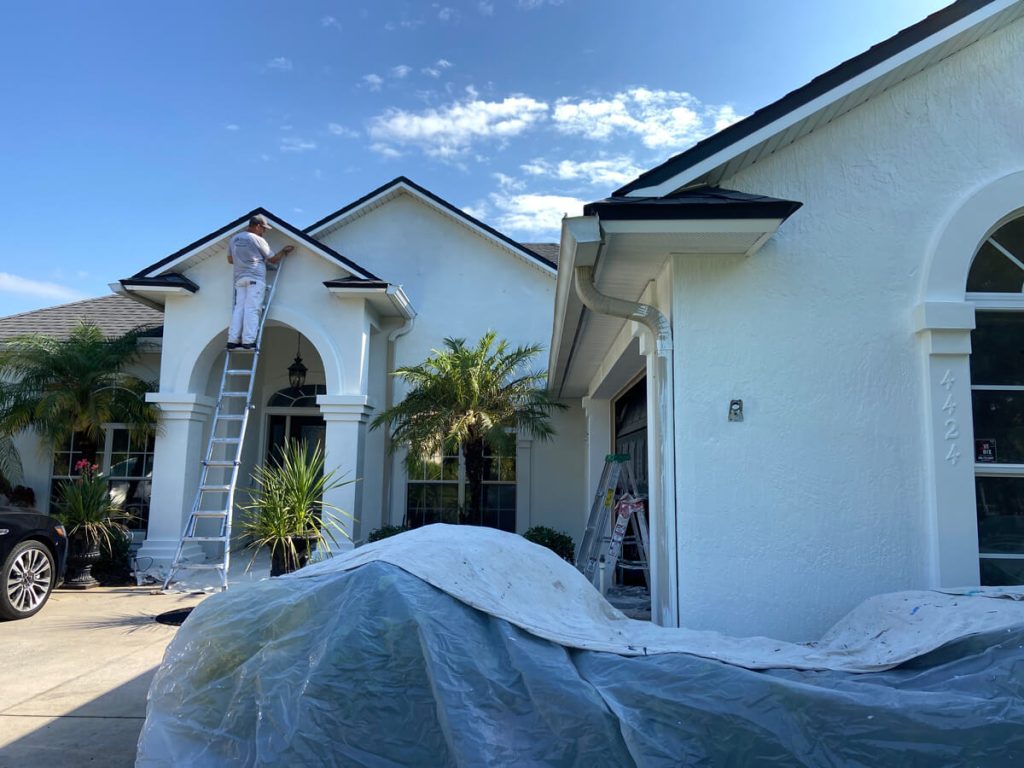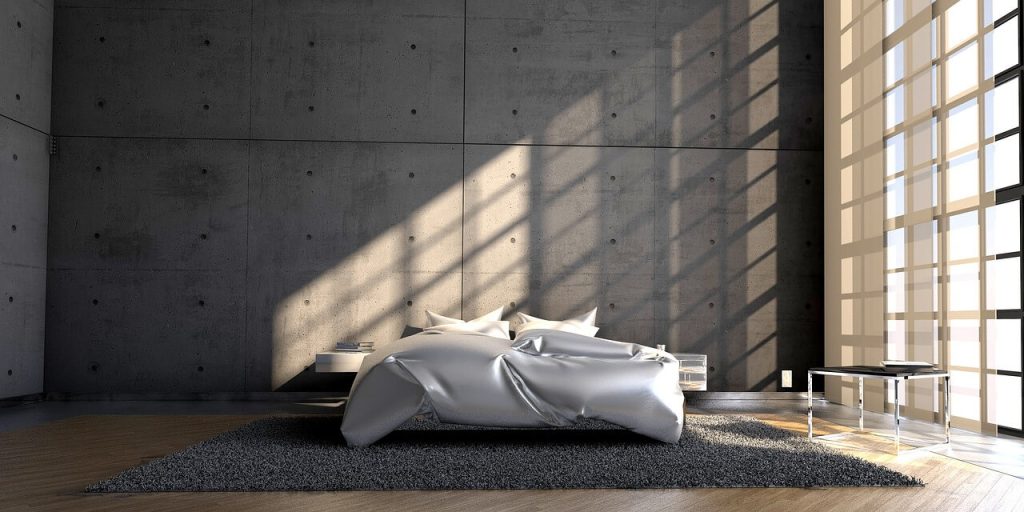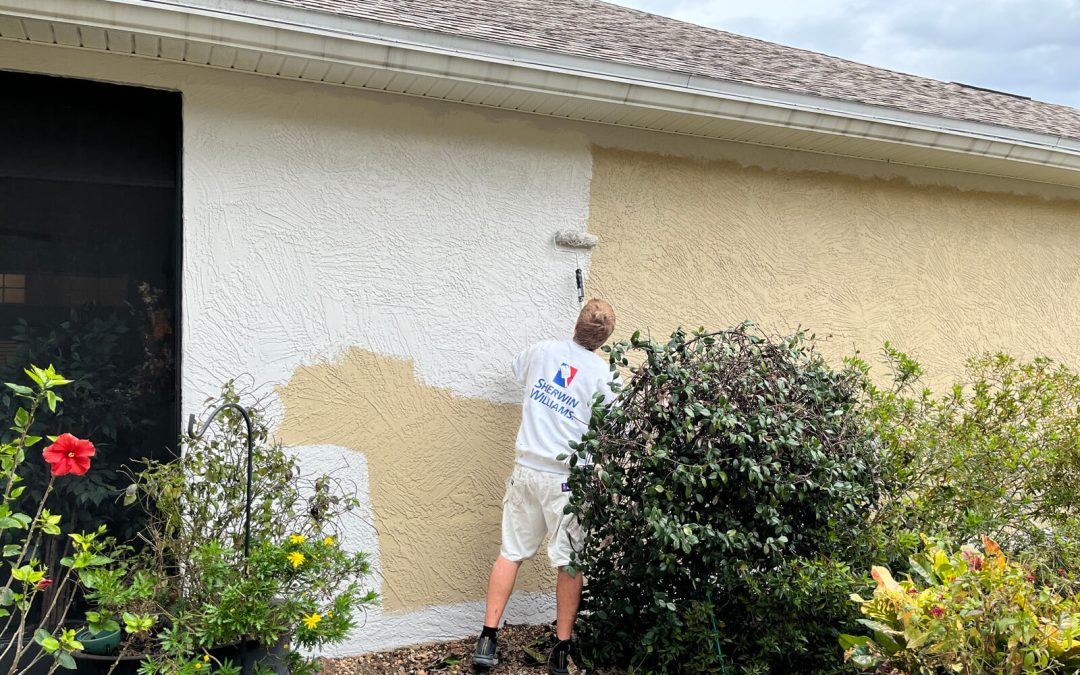Repainting dark or textured wall surfaces requires additional steps to achieve proper coverage and a uniform finish compared to repainting traditional, smooth surfaces. Extra steps are also necessary if you want to repaint previously dark-colored interior walls with a lighter shade. This guide will walk you through the necessary tasks and techniques step-by-step to achieve the desired result.
Repainting textured walls, therefore, demands more attention than painting smooth surfaces. Let’s review the tasks according to different surface types!

Repainting comb-plastered, patterned plaster, and lattice stucco walls
The indentations and protrusions of comb-plastered, patterned plaster, and lattice stucco walls are more challenging to cover, and the surface often needs to be evened out before it can be repainted uniformly with a consistent color. Here are detailed steps to achieve the best results.
How to repaint a textured walls?
- Preparing walls for repainting:
- Primer for texture walls: Applying a primer coat is especially important for filling the indentations. Depending on the texture, it is recommended to use a special, deep-penetrating, or adhesion-promoting primer.
- Using a primer coat: This acts as an extra sealing layer, helping to fill the indentations. It also enhances coverage and reduces the number of subsequent coats needed.
- Painting technique: Layering is the most effective method for repainting. Each new layer better fills the indentations. It’s advisable to apply the paint in crisscross directions to ensure even coverage.
- Drying time: Allow appropriate drying time between layers, as per the paint manufacturer’s recommendations, to ensure deep penetration. Due to the indentations, do not shorten the suggested drying time, as internal areas may dry more slowly.
Read more: How long does it take for interior paint to dry? - Paint selection: Use paint with high coverage and good adhesion. For example, structural or textured paint can be used to achieve a special texturizing effect if a smooth surface is not desired later.
Thorough preparation, layering, and the appropriate paint composition are key to achieving uniform, optimal coverage on textured walls. Check out our exterior house painting projects!
Repainting concrete walls
Concrete walls are commonly found in garages and parking areas. However, they are also popular in loft apartments, sometimes even in bedrooms. While spray painting is often used in garages, let’s explore the process of repainting a concrete wall in a bedroom or living room.
Repainting walls with textured or untextured concrete surfaces poses a special challenge due to their texture and porous nature. It’s advisable to follow these steps:
Preparing walls for repainting: Concrete surfaces tend to be very dusty, so thorough cleaning is necessary before painting. This can be done by vacuuming or wiping down the surface. It’s crucial to remove all dust, as otherwise, the paint may not adhere properly.
Priming: Using a high-quality primer that penetrates deeply and enhances adhesion is essential for concrete surfaces. Multiple coats of primer may be necessary for optimal coverage.
Layering: Due to the porous nature of concrete, applying multiple coats, perhaps 3-4 layers, is recommended to achieve a uniform finish.
Paint selection: Opt for 100% acrylic or other high coverage, good adhesion concrete paint. Choose a water-resistant, breathable semi-gloss or matte paint if possible.
Therefore, proper preparation, priming, layering, and targeted paint selection are crucial for achieving an even, durable finish on concrete surfaces. Patience is also required when repainting concrete walls! The complexity of the task and the need for multiple layers extend the painting time, which should always be taken into account.

How to repaint textured walls?
Repainting dark-colored walls: best way to paint textured walls
How to paint over dark walls? Repainting dark-colored walls can be more challenging, especially if you want to change to a lighter shade. However, by following the suggestions below when choosing paint, the task becomes manageable. Once you’ve selected your desired new paint color, check the following aspects of the paint:
Coverage
Opt for premium-quality paint with high coverage. Cheaper, low-coverage paints often result in uneven, patchy coverage. For repainting dark shades, you’ll need pigment-rich, vibrant paints applied in multiple layers. Plan for a minimum of 2-3 coats! Thinner, less pigmented colors may provide weak coverage over the dark base.
Layers, Paint Quantity
It’s generally not sufficient to apply a single thick coat; multiple layers are recommended. Apply at least 2, but preferably 3 thin, covering layers, alternately applying from perpendicular directions to achieve an even final result.
Primers
Using high-quality primer, preferably in a shade close to the final color, is also recommended. This helps ensure even coverage and reduces the number of required paint layers. Primer is a water-thinnable material applied to the wall before painting. It’s especially recommended for highly absorbent surfaces to even out the surface’s absorption and provide a suitable base for the paint layers. After applying the primer layer, it’s usually best to wait for about 24 hours before applying the first coat of covering paint.
The quality of the paint, its pigment content, layering technique, and thorough preparation collectively ensure the uniform, streak-free repainting of dark walls. Patience and expertise are crucial.
I hope this guide helps: how to repaint dark-colored walls or concrete surfaces if you want to do it yourself at home. If you would rather entrust the task to a professional painter in the Saint Augustine area, feel free to call me for a free quote. Call now: 1(904)217-9681
For further guides and renovation inspirations, keep reading the blog:


